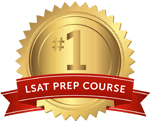Having good grammar will not only help you score higher on your LSAT, but it will help you in your overall legal life. Using correct grammar will be clutch in your legal writing class. Correct grammar will help you impress your professors and later on impress your clients and peers in a legal office or courtroom. As an English major, I have always had a penchant for impeccable grammar. Therefore, I wanted to compile a list of common grammatical errors that get my goat and will help you look like a grammar guru.
- Who and Whom
Ah yes, those notorious words: who and whom. Let’s get it right. “Who” is a subjective (or if you want to get really fancy, it is a nominative) pronoun. Examples of subjective pronouns are “he,” “she,” “it,” “we,” and “they.” “Who” is used when the pronoun acts as the subject of a clause. Example: Who is going to eat that apple? “Whom” is an objective pronoun. Examples of other objective pronouns are “him,” “her,” “it,” “us,” and “them.” “Whom” is used when the pronoun acts as the object of the clause. For example, “I asked David, whom I met in Los Angeles, if he was going to eat the apple.” Using “who” or “whom” depends on whether you’re referring to the subject or the object of the sentence. - Which and That
“That” is a restrictive pronoun. It is very important to the noun to which it is referring. Example: “I don’t trust chickens that are not free-range.” I am saying that I only trust chickens that are free-range. “Which” introduces a relative clause. It allows qualifiers that may not be essential. Example: “I suggest you eat only free-range chickens, which are available at your local butcher.” In this case you don’t necessarily have to go to a specific butcher to get these chickens. “Which” qualifies, and “that” restricts. - Lay and Lie
I see so many of my students make mistakes on these two words. Please pay attention. “Lay” is a transitive verb. It requires a direct subject and one or more objects. Its present tense is “lay” and its past tense is “laid.” Examples: I lay my coffee cup on my desk; Yesterday, I laid my coffee cup on my desk. “Lie” is an intransitive verb. It needs no object. Its present tense is “lie”, and its past tense is “lay.” Examples: I lie waiting for the sun to rise; Yesterday, I lay waiting for the sun to rise. The most common mistake occurs when someone uses the past tense of the transitive “lay” when he or she actually means the intransitive past tense of “lie.” - Moot
I find this always to be a really funny common mistake among law students because they are constantly surrounded by moot court. “Moot” does not imply that something is superfluous or rendered irrelevant. It actually means that something is disputable or open to discussion. Hence, Moot Court. Obviously, moot court doesn’t mean irrelevant court!
Alright, I’ll leave you with those four for now. I have many more on my list, but I won’t bombard you with them all at once. Use these tips in your logical reasoning, reading comprehension and writing section (that silly section, you really shouldn’t worry too much about). Onward and LSAT prep!
Happy Studying!










